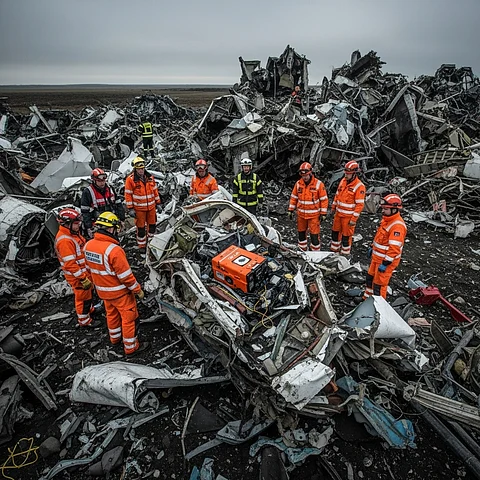

When an airplane crash happens, there is significant attention given to the black box. During the investigation, the voice recordings contained within this device helped uncover the reasons behind the accident. It captures everything said by the two pilots in the cockpit, making it essential for the inquiry into an aircraft incident. Interestingly, despite being referred to as a "black box," it isn't black. Let’s explore this further.
While the primary use of “black box” is to investigate accidents, its ultimate purpose is to prevent future occurrences. Accident investigators carefully analyse the data and audio retrieved from these recorders to reconstruct the sequence of events and identify the factors that contributed to the incident. This knowledge leads to enhancements in aircraft design, updated pilot training protocols, and modifications to air traffic control procedures, all aimed at making air travel safer for all.
Black Boxes Are in Orange or Yellow Colour!
Though commonly known as "black boxes," these devices are painted a “bright orange” or “bright yellow”. This colouring makes them easier to locate and recover after an accident, particularly in debris or underwater scenarios.
A black box system is made up of two distinct units:
Cockpit Voice Recorder (CVR): This records all audio in the cockpit, including pilot conversations, communications with air traffic control, and ambient sounds such as engine noise and warning alarms.
Flight Data Recorder (FDR): This captures a wide range of operational data from the aircraft's systems, including airspeed, altitude, heading, vertical acceleration, engine power, flap settings, and control surface positions. Modern FDRs can monitor hundreds of parameters.
Why the Black Box Location in the Tail?
The Cockpit Voice Recorder (CVR) and Flight Data Recorder (FDR) are securely encased in highly durable, impact-resistant units, which are usually situated in the tail section of the aircraft. This location is chosen because the tail typically experiences less force during a crash compared to the front or middle sections, enhancing the likelihood of both recorders surviving unscathed.
Black boxes are engineered to endure extreme conditions. They can withstand impacts exceeding 3,400 Gs (gravitational force), temperatures as high as 1,100 degrees Celsius (2,012 degrees Fahrenheit) for a minimum of one hour, and pressures equivalent to being submerged at depths of 20,000 feet (6,000 meters) underwater.
Each black box is outfitted with an Underwater Locator Beacon (ULB). This beacon activates automatically upon immersion in water and emits a high-frequency "ping" for at least 30 days, facilitating the search for the recorders if the aircraft goes down in the ocean. The ULB is powered by a battery designed for long-lasting operational life, typically ranging from 30 to 90 days, to support recovery efforts.
Key in the Accident Investigation
The primary function of black boxes is to aid in accident investigations. The data and audio retrieved from these devices offer vital insights that help investigators piece together the circumstances surrounding an aviation incident, ultimately contributing to advancements in aviation safety. Both the CVR and FDR are designed for continuous recording. The CVR typically captures the last two hours of audio, while the FDR records at least the last 25 hours of flight data, overwriting older information as needed.
